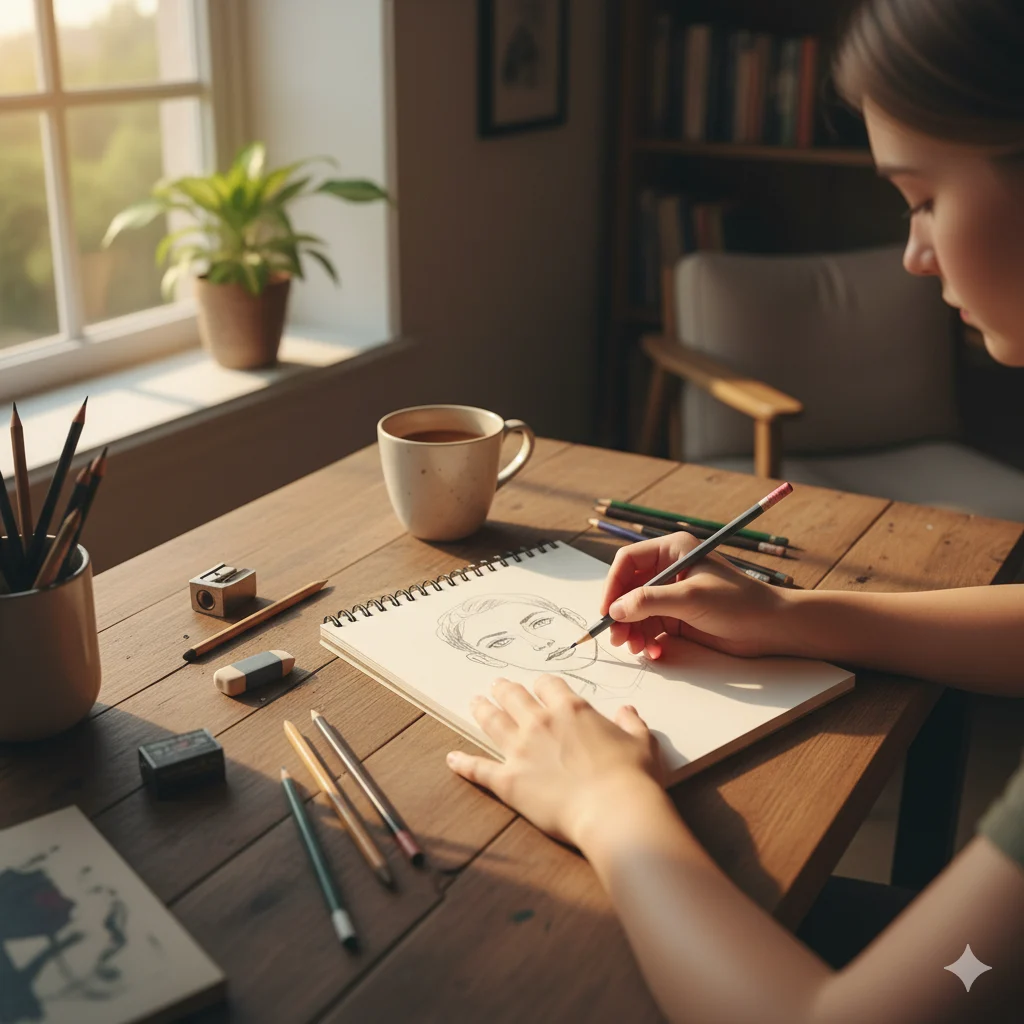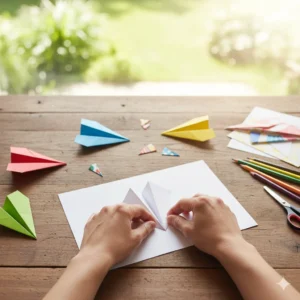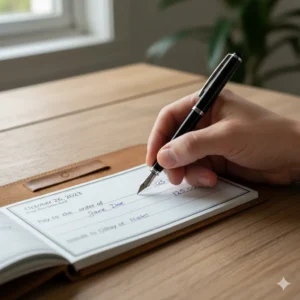Imagine a rainy afternoon when I was eight years old, staring out the window with nothing but a pencil and a crumpled piece of paper. I doodled aimlessly at first—a wobbly circle that became a sun, then lines that turned into a smiling face. That simple act sparked a lifelong love for drawing, pulling me out of boredom and into a world of imagination. It wasn’t about perfection; it was about the joy of creating something from nothing. If you’ve ever felt that pull to pick up a pencil but hesitated, wondering where to start, you’re not alone. Learning how to draw can feel intimidating, but it’s a skill anyone can develop with patience and practice. In this guide, we’ll walk through the basics together, turning your blank page into a canvas of possibilities.
What Supplies Do You Need to Learn How to Draw?
Getting started doesn’t require fancy tools. Begin with the essentials to build confidence without overwhelming yourself. A simple graphite pencil, like an HB or 2B, offers versatility for light sketches and darker lines. Pair it with a good eraser—kneaded ones are great because they lift graphite without smudging.
Don’t forget paper. Sketchbooks with medium-weight pages prevent bleed-through and give you room to experiment. As you progress, add colored pencils or markers for fun. Remember, the goal is enjoyment, so start small and upgrade as your passion grows.
Understanding Basic Shapes: The Foundation of How to Draw
Everything in drawing boils down to basic shapes. Think of a house as a square with a triangle on top, or a face as an oval with circles for eyes. This approach simplifies complex subjects, making them approachable for beginners.
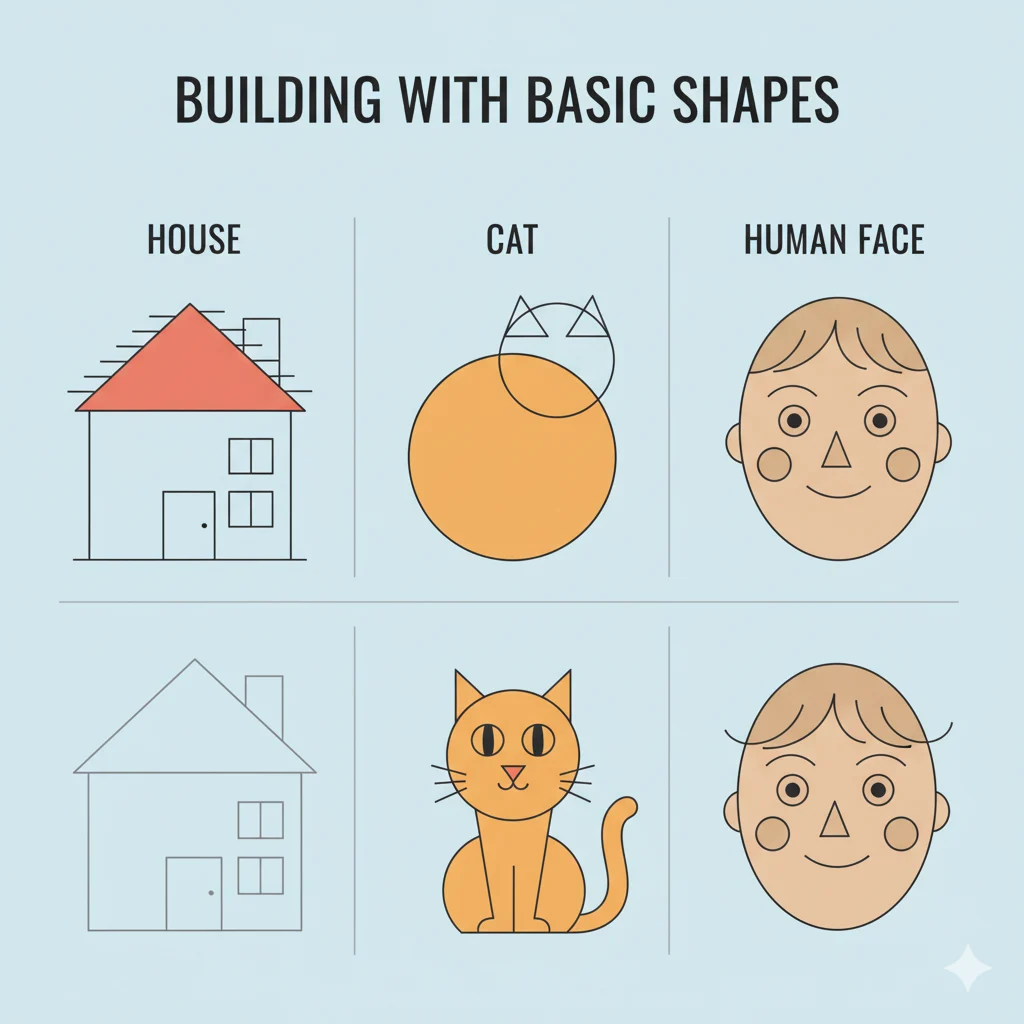
Practice by breaking down everyday objects. Draw a mug as a cylinder with an oval rim. Over time, this trains your eye to see the world in shapes, turning observation into art. It’s like learning the alphabet before writing stories—essential and empowering.
Mastering Lines and Contours in Drawing
Lines are the heartbeat of any sketch. Start with straight lines, then curve them to form contours that outline your subject. Hold your pencil loosely for fluid strokes, and vary pressure for thickness.
Try contour drawing: Look at an object and draw its edges without lifting your pencil or glancing at the paper. It might look wonky at first, but it sharpens your focus. This technique helps capture the essence, making your drawings feel alive and dynamic.
How to Draw Proportions: Getting the Scale Right
Proportions can make or break a drawing. Use guidelines like dividing a figure into eight head-lengths for human bodies. Measure with your pencil—hold it out at arm’s length to compare sizes.
A common tip: Flip your drawing upside down to spot imbalances. It’s a fresh perspective that reveals errors. With practice, accurate proportions become second nature, giving your art a professional touch.
Adding Depth with Shading Techniques
Shading transforms flat sketches into three-dimensional wonders. Start with hatching—parallel lines for shadows—or cross-hatching for deeper tones. Blend with your finger or a tissue for smooth gradients.
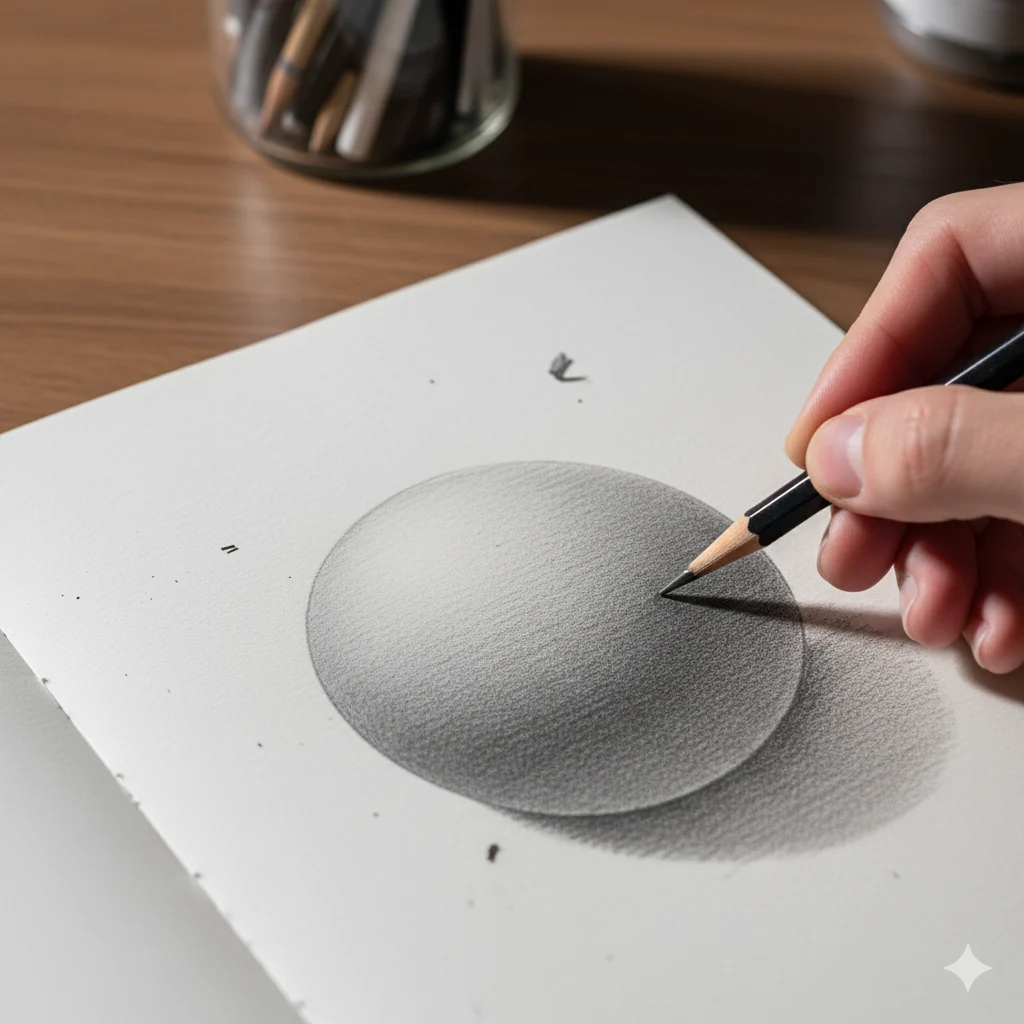
Observe light sources; highlights stay light, shadows dark. Experiment on simple spheres to see how light plays. This not only adds realism but also evokes emotion, like the warmth of sunlight on a drawn apple.
How to Draw Faces: Step-by-Step for Beginners
Faces are fascinating but tricky. Begin with an oval for the head, then add a horizontal line halfway down for eyes. The nose sits midway between eyes and chin, mouth a third below the nose.
Add details like eyebrows and hair last. A do: Study real faces in mirrors or photos. Don’t: Overdo symmetry—real faces have subtle asymmetries. This method builds portraits that feel personal and expressive.
Exploring Colors: When and How to Add Them
Once comfortable with pencils, introduce color. Use colored pencils for layering—start light, build intensity. Watercolors offer fluidity but require practice to control bleeds.
Choose colors that match your mood; blues for calm, reds for energy. It’s not just about accuracy but expression. Color breathes life into drawings, turning sketches into vibrant stories.
How to Draw Animals: Capturing Movement and Personality
Animals bring joy to drawing. Start with basic shapes: A cat as circles for head and body, triangles for ears. Observe poses—curved lines for tails convey playfulness.
A real-life example: I once sketched my dog mid-yawn, focusing on fur texture with short strokes. It captured his goofy charm. Tip: Use references from photos to nail anatomy without frustration.
Common Mistakes in How to Draw and How to Fix Them
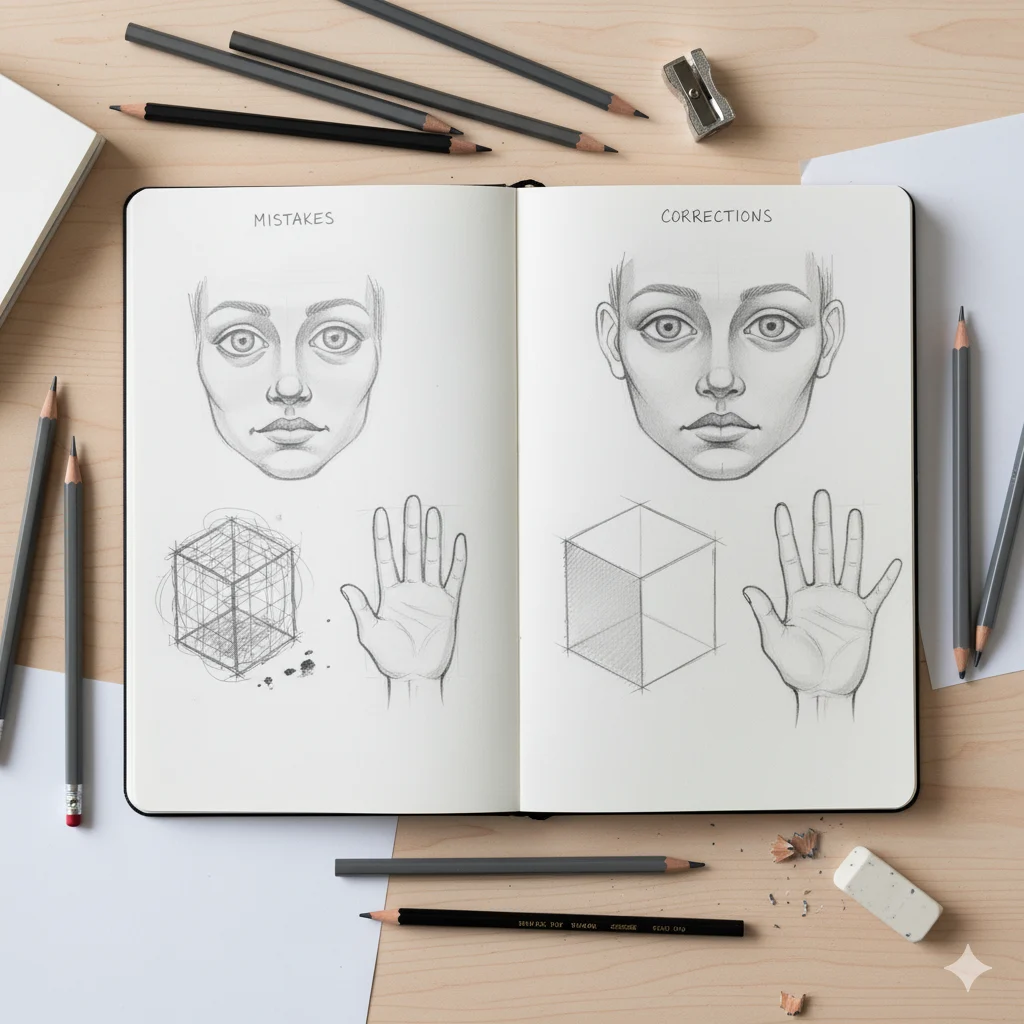
Everyone errs, like pressing too hard and creating unerasable marks. Solution: Sketch lightly first, then refine. Another pitfall: Ignoring negative space—the areas around your subject.
Do: Take breaks to view your work from afar. Don’t: Rush details before basics. Fixing these builds resilience, turning setbacks into growth opportunities.
Building a Daily Drawing Habit
Consistency is key. Set aside 15 minutes daily for quick sketches. Keep a journal of progress to see improvement, which motivates you.
Join online communities for feedback. It’s inspiring to share and learn. Over weeks, you’ll notice smoother lines and bolder ideas, fostering a habit that enriches your life.
Advanced Tips: Taking Your Drawing Skills Further
Ready for more? Try perspective—lines converging to a vanishing point for depth in scenes. Experiment with mixed media, like ink over pencil.
Study masters like da Vinci for inspiration. These steps elevate simple drawings to art pieces, unlocking endless creativity.
Finding Inspiration: Where Ideas Come From When Learning How to Draw
Inspiration strikes everywhere—from nature walks to people-watching. Carry a small sketchbook to capture fleeting moments.
When stuck, prompt yourself: Draw your dream vacation or a childhood memory. This keeps the spark alive, making how to draw a joyful pursuit rather than a chore.
FAQs About How to Draw
What is the best way for absolute beginners to start learning how to draw?
Begin with basic shapes and daily practice. Focus on observation and simple objects like fruits to build confidence without pressure.
Do I need expensive supplies to learn how to draw?
No, start with a basic pencil, eraser, and paper. Quality tools help later, but creativity comes from practice, not price tags.
How long does it take to get good at drawing?
It varies, but consistent 20-minute sessions daily can show progress in weeks. Patience and enjoyment speed up the learning curve.
What are some easy things to draw for practice?
Try flowers, trees, or household items. They offer variety in shapes and textures, making practice fun and effective.
Can anyone learn how to draw, or is it a natural talent?
Anyone can learn with dedication. Talent helps, but skills develop through technique and repetition, proving it’s accessible to all.
How do I overcome artist’s block when trying to draw?
Step away, walk outside, or doodle freely. Switching subjects or mediums often reignites ideas and flow.
Is digital drawing easier than traditional for beginners?
It depends—digital offers undo buttons, but traditional builds foundational skills. Try both to see what feels right.
Conclusions
As we wrap up this journey into how to draw, remember that every masterpiece starts with a single line. You’ve got the tools and tips to turn hesitation into creation, just like that rainy day sparked my own adventure. Embrace the imperfections; they’re what make your art uniquely yours. Keep sketching, and watch your world expand with color and wonder. It’s not just about drawing—it’s about expressing the beauty you see in life.

